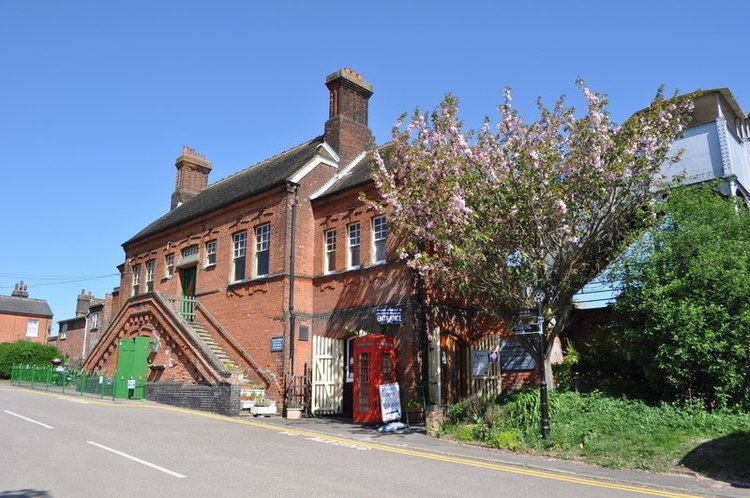Grid reference TL897288 Managed by Abellio Greater Anglia | Local authority Station code CWC Number of platforms 1 | |
 | ||
Chappel & Wakes Colne railway station is on the Gainsborough Line, a branch off the Great Eastern Main Line to Sudbury, in the East of England, serving the village of Wakes Colne and the neighbouring Chappel. It is 50 miles 18 chains (80.8 km) down-line from London Liverpool Street and is situated between Marks Tey and Bures. Its three-letter station code is CWC.
Contents
Map of Chappel, Colchester, UK
The station is currently operated by Abellio Greater Anglia, which also runs all trains serving the station. It has one platform as the line is single-track. It is also home to the East Anglian Railway Museum which has the former London-bound platform, a running line, the original station buildings and all of the land and facilities on the east side of the line. Just to the south of the station the line runs over the Chappel viaduct.
Chappel & Wakes Colne is unstaffed and has no ticketing facilities. The platform buildings, on the station's west side, are restored to 1950s style but are part of the museum, and entered from ground-floor level.
History
The station opened with the opening of the line from Marks Tey to Sudbury as part of the Stour Valley Railway on 2 July 1849, with the name Chappel; it was renamed Chappel and Wakes Colne on 1 October 1914.
The 1861 census shows Samuel Hamblin as the resident station-master. He appears to have fallen foul of the railway authorities at some stage as he is shown working in Poplar as an engine driver in the 1871 census. The 1871 census records 29-year-old Alfred H. Bryant as the resident station-master. The 1881 census shows 45-year-old George William Grand as the station-master, a position he held until at least 1891.
Chappel Viaduct
Sitting just to the south of the station is the outstanding feature on the line, the 1,066 foot long viaduct consisting of 32 arches each having a 30-foot span and standing 75 feet above the valley floor. Built at a cost of £32,000 it contains seven million bricks. The 1851 census records that a foreman bricklayer and several labourers were living in huts adjacent to the viaduct. The vast majority of the bricks had been manufactured on-site using local clay.
Services
The typical off-peak train service is as follows:
In popular culture
This station was used as a filming location in one scene for the 2013 film The Numbers Station, starring John Cusack.
